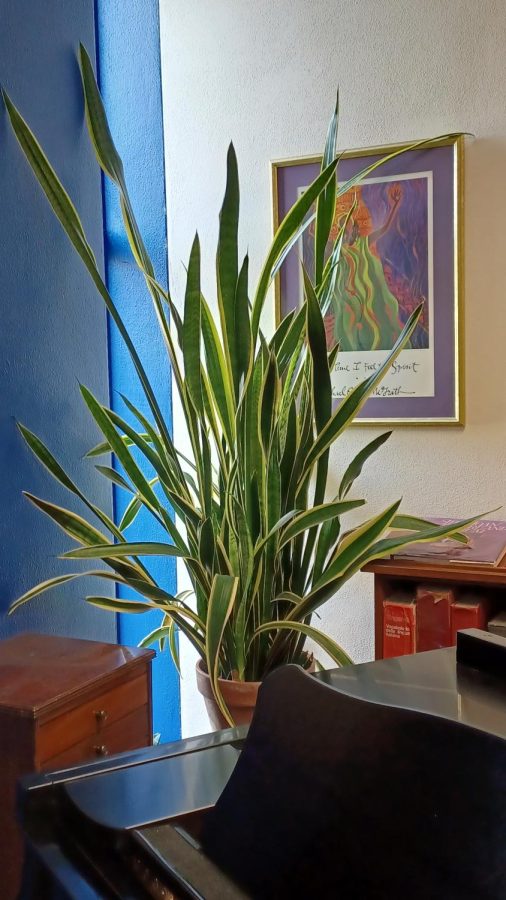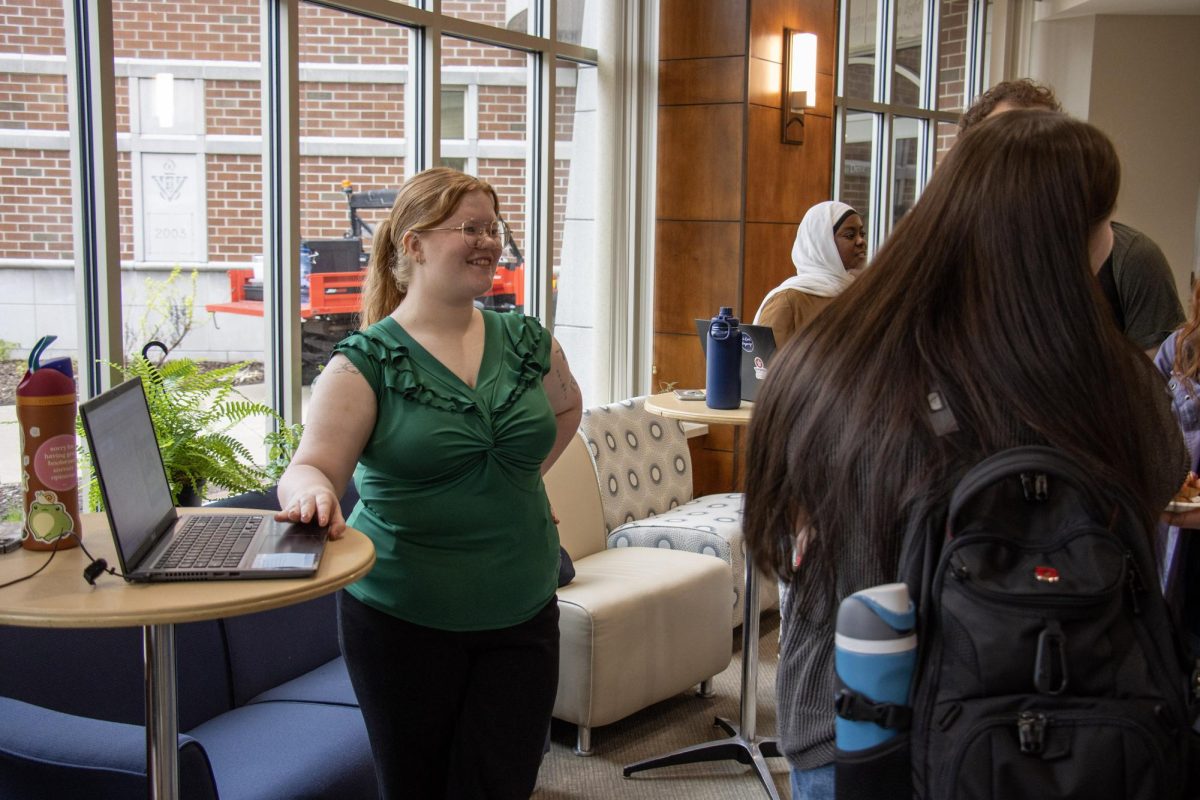A trip down memory lane featuring a special alum
October 20, 2022
In a cozy office on the fourth floor of the Fine Arts Center lives one of the Music Department’s oldest alumni. It has no degree, nor has it ever been recognized as Distinguished, but it has seen more change than most of Viterbo’s past and present musicians. This alum is a fifty-four-year-old snake plant, gifted to Professor Dan Johnson-Wilmot by Sister Lucilda Meyer when he began teaching voice, diction, and choral groups at Viterbo in 1973.
The room that Johnson-Wilmot has spent half a century teaching in was a gift from her too. He recalls Sr. Lucilda saying at the time, “This room is too big for me; that new male voice teacher needs it more than I do.” Thus, he says, she moved down to one of the small practice rooms at the end of the fourth-floor hallway. The snake plant then found its present home, listening quietly as Sr. Lucilda built a reputation from her new office. As she taught music theory and organ then, Johnson-Wilmot recalls, “She would pull students who were slacking in theory class into her little room to tutor them.” He adds, “Rumor had it that when some of the women were asleep in the dorms, she would roust them out of their beds to bring them to class.”
Sr. Lucilda’s legacy has, in this way, lived on alongside her gift. It is older than most campus buildings, including many of the dorms that students live in today. The long green fronds are as old as the Fine Arts Center itself, which Johnson-Wilmot recalls, “was an extravagant building when it was built. The College only had the Murphy Center and the Nursing Center.”
In those days, he says, “some thought the sisters had lost their minds when they built the Fine Arts Center … but their vision was, ‘If you build the building, they will come.’ That is the huge risk that they took. Now, when you look at the campus, it’s three times as large as it was.” The FSPA’s vision for the future paid incredible dividends for the university; Music was one of the first degree programs offered at the college—an addition which contributed greatly to Viterbo’s growth. Since the Fine Arts Center’s inception, the student population has increased almost tenfold.
“When this building was built,” Johnson-Wilmot remembers, “Viterbo College had merely three hundred students.” The student population is now roughly 2500. During the snake plant’s tenure, growth has brought five generations of students to fill the studio with their voices, with faces coming and going alongside landmarks of campus.
One of these defining features was once a walled-off section of Mississippi Street, which passed through what is now Assisi Courtyard. Johnson-Wilmot parked on that street when he first started teaching. When the proposal to insert the courtyard went through, he spoke out against it, believing that removing the road’s decorative wall would detract from the campus’ beauty. However, all his resistance disappeared when he saw the finished courtyard. He recalls, “It was a great lesson for me … one should go along with change and see what advantages it brings to the institution.”
Another large change during the professor’s first two decades occurred on what was once another side of Mississippi Street. Directly across from the FSPA apartments, nicknamed “Vatican Row,” sat the Wonder Bar. Before the drinking age changed to 21 in 1986, the bar served as a social gathering place for students and faculty. There, reportedly, they would discuss coursework over a beer. However, once 1986 came and went, Johnson-Wilmot recalls, “That was not a place faculty would go with students to talk about homework. It turned into a biker bar. The president of the university made a vow to close the bar and attempted to buy it.”
In the end, a third party raised the necessary money and sold it to Viterbo. The building was razed and the Reinhart Center’s predecessor was built atop it. The punch line, the professor says, was that “[The president]—on purpose—had his office placed on the corner of Mississippi Street, right where the Wonder Bar once stood.”
Through all this change, Johnson-Wilmot and his snake plant have kept stories alive, stories that give readers a window into the University’s rich past and the legacies of the Franciscan sisters who paved it.



